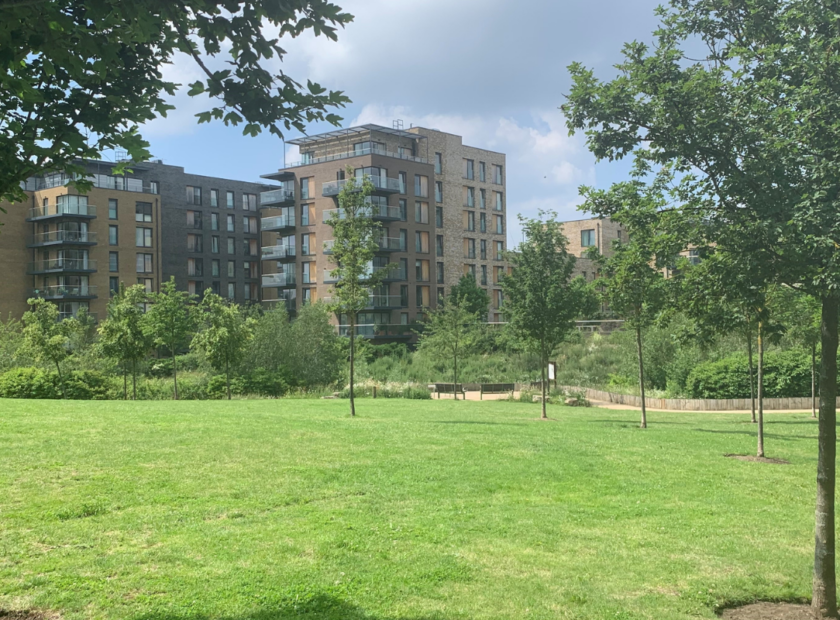Principles for planning reform
The Chancellor’s budget statement repeated the call for a fundamental change to the planning system and pointed to a new policy statement to be published at the end of July. It is not clear how this relates to the Planning White Paper which, as far as we are aware, is still due before the end of this year.
Ahead of the new policy statement, deregulation is already being taken forward through the extension of permitted development rights, but we don’t know what the much-discussed radically reformed planning system will look like. We do know, however, that there is widespread disquiet in the commercial sector and outright anger among communities and environmental networks at the prospect of the dismantling of the system.
We know that if we get these reforms wrong, the consequences for development, for people and for the environment will be profoundly negative. We are concerned that reform in the current divisive context won’t end well because there is no consensus about the problems that government think they are trying to solve. No shared agreement about the basic objectives and principles that might guide the development of a reformed planning system.
In the absence of any detail from Government about what it means by radical planning reform, it’s worth setting out some of the basics that the TCPA believes are important to successfully reform the planning system in the face of housing, health and climate crises.
It is only six months since we published the final Raynsford Review update report, which drew attention to the 21st century slums being developed through a deregulated planning system. The review set out a package of reforms which was comprehensively ignored by government, largely because it represented a sensible set of compromise proposals which would have evolved the system rather than replacing it. In reflecting on that process there emerged three uncomfortable truths about our system and five important principles for reform
Three uncomfortable truths
- Further deregulation is not the answer to getting more homes built
Planning has many problems but the system itself is not the main factor in our failure to deliver enough new homes. The current system consistently delivers more consents than the market can build. The Local Government Association estimate that there are around 1,000,000 housing units currently consented but not built. The vast majority of planning applications are delegated to officers. Over 80% are approved within statutory time scales and well over 80% of housing applications are approved. Yes of course there will be individual frustrations on individual cases in planning and real problems on plan preparation but in general it’s not the structure and process of the system that is problem. Rather it is the absence of the power to turn consents into delivery.
If housing delivery is the main priority for the government it needs to reread the Letwin Review and listen to the complex barriers to delivering growth surrounding skills, investment, infrastructure provision and absorption rates. The answer to delivering more homes is to have more planning not less. In particular, it means public sector bodies acting as master developers to de-risk development. But to get more homes built it is probable that we will need to understand the problems and therefore the solutions on a site by site basis
- People are not a problem.
One of the most divisive issues in the current reform agenda is the way that the word ‘NIMBY’ is bandied around to denigrate those who are believed to stand in the way of development. During the course of the Raynsford Review we reflected on how unhelpful it was to start name calling groups of people that we happened not to agree with. As an exercise it’s worth replacing the word ‘NIMBY’ in any casual discussion about planning reform with the word ‘democracy’. The truth is that our current planning system is obviously asymmetrical. Communities often lack the expertise and resources to participate in planning. Local authorities very often don’t have the resources to help them and most importantly opportunities for public involvement in the planning process are strictly bounded by regulation. The NSIP (Nationally Significant Infrastructure Projects) regime was designed to exclude communities and marginalise the voice of local Government. All of this has generated a chronic lack of trust in the planning system. Frustrations with perverse decisions often centre on the actions of elected members but this is simply the consequence of democracy. Politicians at national and local level should make decisions transparently in line with planning arguments and public law principles. But they also have a constitutional right to represent their communities.
- Government reforms and resource starvation are the two most important causes of delay
In thinking about the future of planning reform it’s worth reflecting that the process over the last 10 years has actually made matters much worse. This is not simply the removal of strategic planning or the deregulation of permitted development, it’s actually the demoralisation and uncertainty created by constant changes to the legislative and policy framework. The other factor which would make the biggest short-term difference to the effectiveness of the planning system is to resource it properly, enabling local planning authorities to have the capacity and skills to do an important job in the most effective manner.
As someone who wants the planning system to fulfil its long-term capability to deliver decent homes and communities for everyone, change is of course important. But the truth is government would be much better employed sweating the detail of the barriers in the development process and seeking to address them, and in fixing the resource crisis, than making grand gestures on radical reform.
Five principles of reform
Successful change in planning requires an accurate grasp of the evidence and the setting aside of the mythology around planning practice to provide an accurate assessment of its real capabilities and efficiencies. In this context it’s worth holding on to five core principles that should guide the reform process.
Democracy
We need to decide whether we want democratic planning in the public interest or a consenting regime simply to enable the market. There’s no getting round this fundamental choice. Much of the reform package we have seen to date is trying to ease out democratic scrutiny, for example on Permitted Development Rights, because its seen as source of ‘delay’. But one person’s delay is another’s due process, so we need to clear what role we see for accountability and scrutiny in the system. For the TCPA, planning must remain democratic to remain legitimate. Representative democracy is messy but important and the great challenge for the future of planning is how decisions can be genuinely participative. If government does not want communities to have any power over their own neighbourhoods they should be honest enough to say so.
Purpose
If we abandon our existing system and replace it with a new and radical zonal approach, as has been the speculation in the media, we will still need to answer the question about what planning is trying to achieve. For the TCPA the purpose of regulating the built environment is about securing the health, safety and well-being of individuals in the wider context of sustainable development. The implication of this objective is that planning will have to be comprehensive. It will need to deal with a wide range of issues from health outcomes, to climate change, from housing standards to energy technology from equality to walkable streets. So, the question for those who want to streamline and simplify the system is which of these considerations should the planning system no longer be concerned with? Planning has to be comprehensive because people and communities have diverse and complex needs.
A strategic approach
One would hope that there is no argument that planning needs to be local; dealing with the issues that matter to people in their homes and neighbourhoods. But for action at the local level to be effective it has to be set in a wider strategic context which simply reflects the reality of how geography works in a small nation. Creating a narrative which runs between a national plan to regional tiers and local delivery is vital. And this will be a key test of whether government is serious about a compelling development narrative for the nation.
A fair approach to sharing land value uplift
In the radical new planning system that we’ve been promised we will still have to think about the way that regulation impacts on land values. Any regulatory system that creates consents for development creates a differential land market. Capturing and sharing the values of that process fairly is vital for the long-term stability of the system. The prime question is; who is to benefit from these value increases and how are they to be distributed?
Nationally enabled, local authority-led delivery
History – and recent experience – has shown that the private sector alone cannot deliver the quality or scale of development needed, in the places that need it most. If a reformed planning system is to tackle the nation’s housing crisis and provide genuinely affordable homes in sustainable communities then it must provide a framework for local authorities to be supported in leading on delivery to de-risk investment and delivery in partnership with the private sector. Tools such as New Town Development Corporations, modernised to embed high standards, meaningful public participation, and tackle the climate crisis are an essential part of this. Any use of such tools must be set within a strong national policy and financial investment package to deliver new places and regenerate existing communities.
The way ahead
As I have said, what is meant by ‘radical planning reform’ is currently unclear. Amongst the confusion about what radical planning reform will mean, one thing is absolutely clear. Government does not see its role as forging a consensus between public and private sector, between community networks and NGOs on the future basis for reform.
Such a consensus is vital to our collective future. Imagine a situation where we could all agree on some basic principles of planning and having made that agreement leave the system alone to operate effectively. Of course, the sectors have different priorities but the prospect of the chaotic reform of the system is now so real that I would suggest that we have an overwhelming common interest in agreeing some basic principles. Impossible? Well if we don’t one result of radical reform could be the kind of direct action that ended the roads programme in the 1980s
The problem for Government is simple. You cannot build without public consent and consent requires trust and trust requires consensus about basic shared values.




